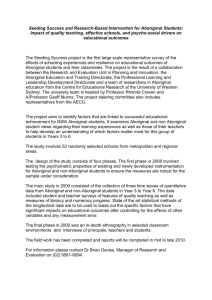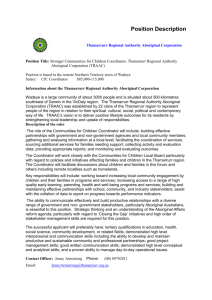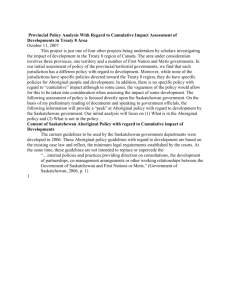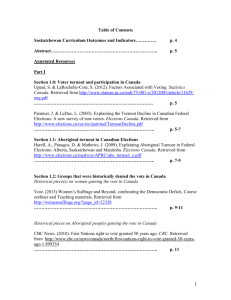Aboriginal Students: Transition from High School to Post
advertisement
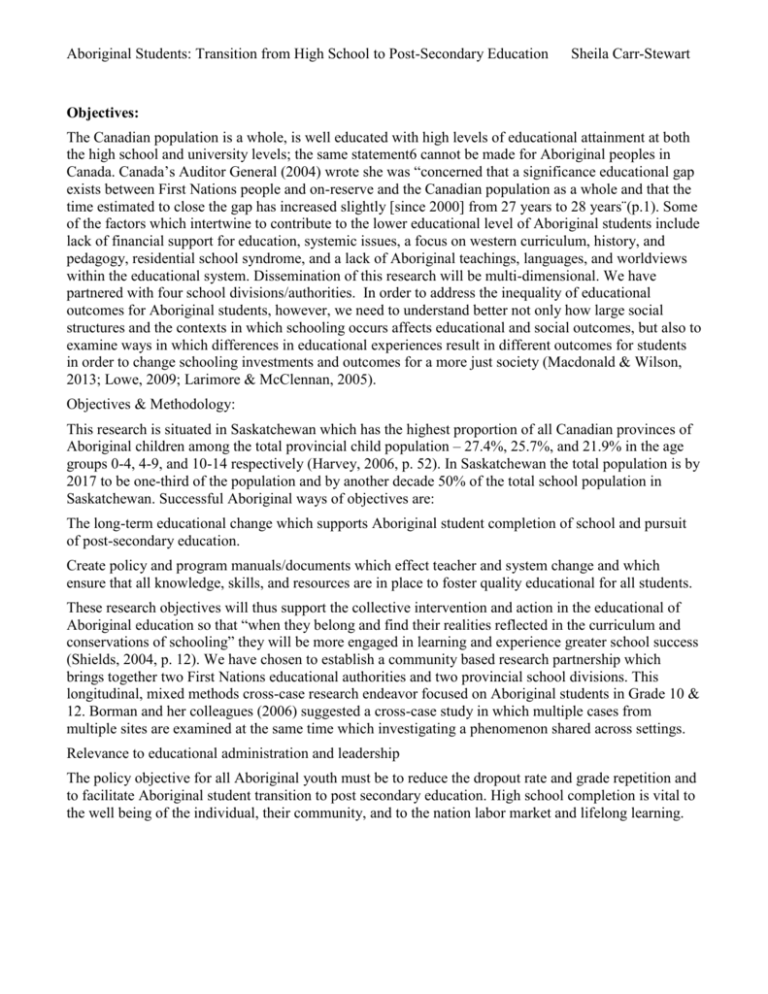
Aboriginal Students: Transition from High School to Post-Secondary Education Sheila Carr-Stewart Objectives: The Canadian population is a whole, is well educated with high levels of educational attainment at both the high school and university levels; the same statement6 cannot be made for Aboriginal peoples in Canada. Canada’s Auditor General (2004) wrote she was “concerned that a significance educational gap exists between First Nations people and on-reserve and the Canadian population as a whole and that the time estimated to close the gap has increased slightly [since 2000] from 27 years to 28 years¨(p.1). Some of the factors which intertwine to contribute to the lower educational level of Aboriginal students include lack of financial support for education, systemic issues, a focus on western curriculum, history, and pedagogy, residential school syndrome, and a lack of Aboriginal teachings, languages, and worldviews within the educational system. Dissemination of this research will be multi-dimensional. We have partnered with four school divisions/authorities. In order to address the inequality of educational outcomes for Aboriginal students, however, we need to understand better not only how large social structures and the contexts in which schooling occurs affects educational and social outcomes, but also to examine ways in which differences in educational experiences result in different outcomes for students in order to change schooling investments and outcomes for a more just society (Macdonald & Wilson, 2013; Lowe, 2009; Larimore & McClennan, 2005). Objectives & Methodology: This research is situated in Saskatchewan which has the highest proportion of all Canadian provinces of Aboriginal children among the total provincial child population – 27.4%, 25.7%, and 21.9% in the age groups 0-4, 4-9, and 10-14 respectively (Harvey, 2006, p. 52). In Saskatchewan the total population is by 2017 to be one-third of the population and by another decade 50% of the total school population in Saskatchewan. Successful Aboriginal ways of objectives are: The long-term educational change which supports Aboriginal student completion of school and pursuit of post-secondary education. Create policy and program manuals/documents which effect teacher and system change and which ensure that all knowledge, skills, and resources are in place to foster quality educational for all students. These research objectives will thus support the collective intervention and action in the educational of Aboriginal education so that “when they belong and find their realities reflected in the curriculum and conservations of schooling” they will be more engaged in learning and experience greater school success (Shields, 2004, p. 12). We have chosen to establish a community based research partnership which brings together two First Nations educational authorities and two provincial school divisions. This longitudinal, mixed methods cross-case research endeavor focused on Aboriginal students in Grade 10 & 12. Borman and her colleagues (2006) suggested a cross-case study in which multiple cases from multiple sites are examined at the same time which investigating a phenomenon shared across settings. Relevance to educational administration and leadership The policy objective for all Aboriginal youth must be to reduce the dropout rate and grade repetition and to facilitate Aboriginal student transition to post secondary education. High school completion is vital to the well being of the individual, their community, and to the nation labor market and lifelong learning.







